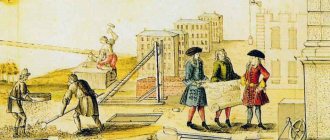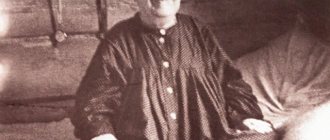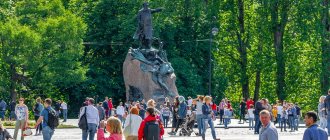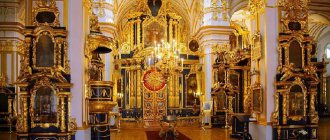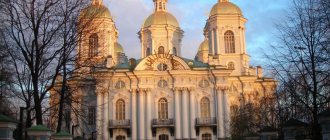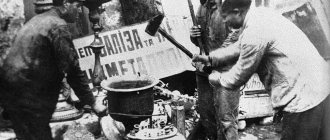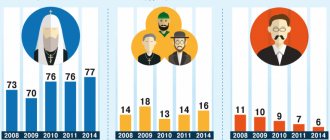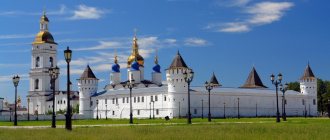Slap Aria
In any port on the planet you can go to the temple built in his honor.
Here is Nikola Mokry in Yaroslavl - 17th century, unique paintings and colorful tiles.
Here is the majestic white and blue baroque of the St. Nicholas Epiphany Naval Cathedral in St. Petersburg - here they first began to minister to the sailors of the Russian fleet.
Here is St. Nicholas Cathedral in Nice - the largest Orthodox church in Western Europe.
Here are modest Greek and Bulgarian chapels along the entire coast of the Black, Mediterranean and other seas, right up to the harsh Baltic...
Ship priests appeared in the Russian fleet in 1719 by decree of Peter I. Before that, sailors coped with prayers themselves. And the icon of St. Nicholas the Wonderworker was raised on a cloth above the masts.
How did Saint Nicholas deserve the love of people who know what mortal danger and risk are?
He has a rich “track record” in the holy books. The ship is in distress - Nikolai calms the storm. A man is lifted on board lifeless - with the prayer of St. Nicholas, the drowned man returns to life. A saintly shipbuilder, dressed in modest clothes, falls from a high mast, raises a prayer to heaven, and the unfortunate man comes to life. From time immemorial, Saint Nicholas is the patron saint of energetic, independent and gambling people. Sailors, travelers, traders. But he also helped “innocently convicted and imprisoned” girls without dowries, widows and orphans.
And it was Nicholas who gave a slap in the face at the Council of Nicea, assembled by Emperor Constantine in 325, to a certain Arius, who spoke disparagingly about the divine nature of Jesus.
Saint Nicholas the Wonderworker
Saint Nicholas the Wonderworker was from Asia Minor. He was born in the 3rd century in the Lycian city of Patara through the prayers of his parents, who had no children for a long time.
Saint Nicholas the Wonderworker
Having baptized a child with the name Nicholas, they raised the future saint in faith and piety. The bishop of the city of Patara was the uncle of Saint Nicholas, also Nicholas.
Seeing what a chaste and ascetic life his nephew led, the bishop suggested that the parents give their son to serve God. It turned out that this was exactly the vow they made when praying for the birth of a child. Saint Nicholas was ordained a presbyter and soon headed the diocese of his uncle, who went to Palestine.
Saint Nicholas was from a wealthy family, so when his parents died, he received a large inheritance. However, he gave it all away to charity.
They say that one day Saint Nicholas passed by the house of a poor man who had three unmarried daughters. By chance, he learned that the poor man was going to sacrifice the honor of the girls in order to get at least some funds for their dowry. Saint Nicholas saved the family from death: under the cover of darkness, he threw a bundle of gold out the window.
Soon the poor man managed to marry off his eldest daughter, then his middle and youngest. The fact is that Saint Nicholas secretly came to the house of the unfortunate family several times with gifts. Recognizing Saint Nicholas as his benefactor, the poor man sincerely thanked him not only for the money that saved his children from desecration, but also for keeping him from sin, which he was ready to commit.
After some time, Saint Nicholas found himself in the city of Myra, the capital of Lycia, where no one knew him. He lived like a beggar, but attended religious services day after day. At the same time, the archbishop died in Myra. And at the council the bishops tried in vain to elect a new one.
Appearance to a clergyman with a request to transfer the relics to Bar-grad
Through the prayers of one of the elders, there was a vision that the first person to enter the temple before the midnight maiden should become an archbishop. This turned out to be the humble and meek Saint Nicholas. The news of the election of an archbishop quickly spread throughout the city.
The new Archbishop Saint Nicholas - hospitable and open, generous and kind, strict in fasting and prayer - became a real intercessor of the poor and disadvantaged. He cared for his flock with great love. Under Emperor Diocletian, a persecutor of Christians, Saint Nicholas was imprisoned, but even there he preached and took care of the prisoners.
In 325, already under Emperor Constantine, Archbishop Myra of Lycia, among others, was invited to the First Ecumenical Council in Nicaea. There, Saint Nicholas not only denounced the heretical teaching of Arius, but even struck him on the cheek for blasphemy. Those present considered this to be excessive jealousy, and the saint was sent to the prison tower and defrocked.
However, Saint Nicholas was soon returned to the council, having been convinced that he was right.
The saint became famous for many miracles: he saved Lycia from famine during a rebellion that broke out in Phrygia, he helped three imperial commanders pacify the crowd and resolve the conflict peacefully. Having learned about the execution of three innocent prisoners planned in the city of Myra, he arrived there and stopped the executioner’s sword.
Having reached a very old age, Saint Nicholas peacefully departed to the Lord († 345-351). His venerable relics were kept incorrupt in the local cathedral church and exuded healing myrrh from which many received healings. In 1087, his relics were transferred to the Italian city of Bar, where they rest to this day.
The relics of St. Nicholas are located under this window at a distance of approx. 90 cm
The name of the great saint of God, Saint and Wonderworker Nicholas, a quick helper and man of prayer for all who flock to him, has become glorified in all corners of the earth, in many countries and peoples.
In Rus', many cathedrals, monasteries and churches are dedicated to his holy name. There is, perhaps, not a single city without St. Nicholas Church.
In the name of St. Nicholas the Wonderworker, the Kiev prince Askold, the first Russian Christian prince († 882), was baptized by the holy Patriarch Photius in 866. Over the grave of Askold, Saint Olga Equal to the Apostles (July 11) erected the first church of St. Nicholas in the Russian Church in Kyiv.
He provided help and beneficence to many who knew him personally and who had never seen him, but who called on him in their prayers.
Saint Nicholas died on December 19 (December 6, Old Style) 342 in the city of Myra. Saint Andrew of Crete said about him: “With his deeds and virtuous life, Saint Nicholas shone in the World, like a morning star among the clouds, like a beautiful moon in its full moon. For the Church of Christ he was a brightly shining sun, he adorned Her like a lily at a spring, and was for Her a fragrant world!”
Nicholas - patron saint of sailors
Saint Nicholas is especially revered among sailors. Most likely this is due to several miracles described in the life of St. Nicholas. One day he was sailing on a ship. During the journey, Saint Nicholas predicted to the sailors a terrible storm that was about to hit the ship. And so it happened. The storm was monstrous.
Saint Nicholas remains the same “first aid in need.”
Saint Nicholas's companions in despair asked him to pray to God for deliverance from death. The saint consoled everyone, told them to take courage and hope in God. Literally immediately after his prayer, the wind died down and the sea calmed down. Then another miracle happened. One of the sailors fell from the mast and fell to his death. Saint Nicholas the Wonderworker resurrected him with his prayer in front of his surprised companions. After which the ship landed safely off the coast of Alexandria.
The story of St. Nicholas helping sailors during a storm is repeated twice in his life. The second time the story talks about sailors who were heading from Egypt to Lycia and also got caught in a storm. Knowing about the illustrious bishop and not hoping for salvation, they mentally called on St. Nicholas to pray for them. A miracle happened. Suddenly, at the ship’s helm, everyone saw St. Nicholas, who was steering the ship. It was he who, a few days later, the sailors recognized as the bishop in the church in the city of Myra, where the ship landed.
Of course, the story of the miraculous rescue of sailors could not go unnoticed by the artists. The Vatican Pinacoteca houses Gentile da Fabiano's painting “The Rescue of Sailors by Nicholas the Wonderworker” (1425). In the National Gallery of Umbria in Perugia is the work of Fra Beato Angelico from 1447, “Saint Nicholas Saves the Ship.”
Even in the coats of arms of some European cities (according to the administrative division of communes), St. Nicholas the Wonderworker is depicted on a ship. So in the coat of arms of the Swiss Tuggen (Canton of Schwyz) it stands on the bow of the ship. On the coat of arms of the French Fort-Mardik (canton of Dunkirk in the Nord-Pas-de-Calais region) he is depicted raising his hands to the heavens with sailors sitting at his feet in a boat.
Nicholas the Wonderworker - patron saint of children
It is no secret to many that the prototype of Father Frost in Russia, Santa Claus in America and Father Christmas in Europe was St. Nicholas the Wonderworker. Most likely, this is connected with a plot from the life of St. Nicholas about helping three girls, the daughters of a poor man, through the window of whose house St. Nicholas threw gold three times.
Saint Nicholas the Wonderworker
There is another version. Saint Nicholas was widely revered in Europe. There were many tales and legends about him: how he puts coins in the shoes of the poor placed on the threshold of their houses, and throws sweets into the windows. And in the 10th century a song appeared in Europe in which the life was modified. And three innocent residents of the city of Mira, sentenced to execution, were replaced in the lyrics of the song with three children.
The existence of this song emphasized that St. Nicholas is the patron saint of children . A little later in Europe, first in the Cathedral in Cologne (in the 10th century), and then outside Germany, a tradition arose on the day of remembrance of St. Nicholas to distribute sweets to children in the church.
They fell in love with the tradition, and later parents began to hang socks over the fireplace, where obedient children were given a delicacy on the day of the saint’s memory, and rods were placed for disobedient children.
We most likely owe the final transformation of St. Nicholas into Father Christmas to Martin Luther and the Reformation, which excluded the veneration of saints, but did not exclude tradition. A little later, during the era of the Counter-Reformation, children again began to receive gifts in the name of St. Nicholas. The only difference was that they received them for Christmas.
The poet Clement Clark Moore played a significant role in shaping the image of Christmas. In 1822 he wrote the poem "The Night Before Christmas or the Visit of St. Nicholas." In it, he described the fairy-tale character Santa Claus, who gives gifts to children at Christmas and rides on a reindeer sleigh. The poem was republished in 1844. Then it became very popular in America, to which, in turn, we owe the Red Robe, the registration of Santa Claus at the Pole and the elves. They were invented in 1863 by artist Thomas Nast.
Wooden sculpture: Nikolai Mozhaisky
One of the largest collections of wooden sculpture (400 exhibits of the 17th-19th centuries) in Russia belongs to the Perm State Art Gallery. This collection (part of it is on display at the Historical Museum in Moscow until March 1, 2014) amazes with its beauty, imagery, and technique.
Nikola Mozhai, Perm wooden sculpture
The originality of northern temple sculpture is somewhat shocking. Indeed, in the Eastern Christian tradition, three-dimensional images of saints were prohibited by the Holy Synod. And the fact that wooden sculptures have survived to this day should be considered rather a miracle and an exception.
By the way, we also owe this collection to Nikolai. Art critic Nikolai Serebrennikov, the son of a priest, organized scientific expeditions to the Perm region in the 20s of the 20th century, hoping to preserve unique ancient monuments. Nikolai Serebryannikov collected wooden sculptures from Perm churches closed by the Soviet government. He was actively supported by the director of the Tretyakov Gallery Igor Grabar and the People's Commissar of Education Anatoly Lunacharsky. Thanks to the latter, it was possible to publish a book dedicated to Perm wooden sculpture.
One of the most popular themes in wooden architecture - and this is only confirmed by the exhibits of the Perm Museum, museums of Moscow, Murom, and other cities - was the image of St. Nicholas the Wonderworker, or St. Nicholas of Mozhaisk. Standing tall, with outstretched arms, Saint Nicholas clutches a sword in his right hand, and holds a city-temple in his left palm in his open palm.
According to legend, Saint Nicholas appeared to the residents of the besieged city of Mozhaisk in a cloud, which terribly frightened the enemy. The enemy fled. The townspeople carved a sculpture in memory of the savior and defender of the city. Thus, the image of Nikolai Mozhaisky from the 14th century became widespread not only in wooden sculpture, but even in icon painting.
Today, the attitude towards sculpture depicting a saint has changed. This does not mean that sculptures began to appear in Orthodox churches. However, since 2002, a project to install monuments to St. Nicholas the Wonderworker “From Kaliningrad to Chukotka” has existed and continues to develop. They already exist in Perm, Tambov, Omsk, Kaliningrad, Maikop, Tolyatti, Anadyr and even on Novaya Zemlya and Franz Josef Land.
The image of St. Nicholas the Wonderworker in painting
Nikola (Lipensky). 1294. Alexa Petrov, Novgorod Museum
Saint Nicholas of Myra is especially revered by all branches of the Christian Church. Therefore, there are many hagiographic subjects in European fine art, especially among Renaissance artists. Amborgio Lorenzetti, Fra Beato Angelico, Gentile da Fabrian and many others glorified St. Nicholas in their canvases. As in Russia, these works were created mainly for the decoration of chapels and churches, and formed parts of altars.
However, we are all well aware of the painting by the artist Ilya Repin, which cannot be called an icon: “Nicholas of Myra stops the execution of three innocent convicts.” It must be said that there were not many religious subjects in Russian painting. Attempts to direct creative thought into the religious sphere, to speak in evangelical images, were made by Nikolai Ge, Alexander Ivanov, Mikhail Nesterov, and Viktor Vasnetsov. But this painting was perceived ambiguously by contemporaries.
And the point is not only that the established icon-painting canons strictly dictated the conditions. Even Benoit, in his “History of Russian Painting,” speaking about the sacred mission of Russian art, “as a reflection of spiritual life,” asks a rhetorical question: “Is it possible that truly religious Russian painting originated on the walls of our churches?
The answer to this question, rather, seems to be negative, because according to established custom, the internal decoration of temples usually depends on academically stale architects and, even worse, on various commissions and committees.”
So contemporaries called Ilya Repin’s painting a fictitious and uninteresting thing. And this despite the fact that Repin devoted four years of his life to working on the image of St. Nicholas the Wonderworker.
In 1886, Repin visited his cousin in the Verkho-Kharkov Nikolaev Monastery. Nun Olympiada conveyed to Repin a request from the abbess of the monastery to paint the image of St. Nicholas the Wonderworker. The artist even corresponded with Stasov and received from him materials about St. Nicholas, with which he worked a lot. As a result, what came out of his brush was not an icon, but three paintings at once: “Nicholas of Myra spares three innocent prisoners from the death penalty.” One of them, written first, in 1888, is in the Russian Museum in St. Petersburg. The other two, author’s repetitions, are in art galleries in Kyiv and Kharkov.
The first church of St. Nicholas in Rus'
According to legend, the first church in honor of St. Nicholas the Wonderworker of Myra was erected in Kyiv by Equal-to-the-Apostles Princess Olga over the grave of Prince Askold. Askold was the first of the Kyiv princes to receive holy baptism with the name Nicholas. He was baptized by the holy Patriarch Photius in Constantinople, as Byzantine sources tell us.
Nicholas the Wonderworker. Icon created by Honored Artist of the Russian Federation S.K. Chiryev, artist A.V. Chizhov.
This happened around 866, when Askold, at the head of a flotilla of 360 ships, approached Constantinople. The frightened Greeks, seeing how Askold was burning villages one after another and destroying churches, offered peace. And at the same time, they showed us the shrines of the city, and first of all, the Temple of Sophia the Wisdom of God. Askold was shocked both by the beauty of the service and by his communication with the Greek philosopher Cyril.
But soon the prince not only fell ill, but went blind. Hoping that he would be healed and promising that he would believe in Christ, Askold was baptized with the name Nikolai.
According to legend, he actually received his sight and exclaimed that he “saw the true God.” However, having returned to his homeland, Askold did not live long. He was soon killed by Prince Oleg.
Only in 957 did Princess Olga erect a three-domed church in the name of St. Nicholas the Wonderworker at the burial site of Askold. She probably loved to be here because she bequeathed to be buried near this temple.
In the 15th century, on the site of Askold’s grave there was the Kiev-Pustynno-Nikolsky Monastery. In 1809, when the monastery was moved to a more convenient location, a new stone St. Nicholas Church was erected here, which was saved from demolition by Nicholas I, who visited it in 1847. The temple still exists today. However, in 1992 it was transferred to the Ukrainian Greek Catholic Church.
Temples in honor of St. Nicholas the Wonderworker in Moscow and Europe
Hundreds and even thousands of churches in Russia are consecrated in honor of St. Nicholas the Wonderworker. Before the revolution, in addition to large parishes, there were many house churches at hospitals, almshouses, shelters, and gymnasiums.
Cathedral of St. Nicholas the Wonderworker in Vienna
In Moscow today there are twenty-nine churches consecrated in honor of St. Nicholas the Wonderworker. Many of them, although not all, were not affected by either revolution or war. Like, for example, the Church of St. Nicholas in Kuznetskaya Sloboda in Moscow. Known since the 15th century, the temple was rebuilt several times (in 1625, 1683, 1805), but was never closed. For the parishioners of St. Nicholas Church, this is akin to a miracle.
Many churches belong to the Russian Orthodox Church in Europe. Almost all of them, with a few exceptions, were built before the revolution. There are temples in the capital of Austria - Vienna; in Belgium - in Brussels; in Bulgaria - in Sofia; in England - in Oxford and Liverpool, where the mission of St. Nicholas the Wonderworker is located; in Hungary - in the cities of Gyongyos and Tokaj; in Germany - in Gifhorn, Ingolstadt, Freiburg, Frankfurt am Main, Stuttgart, Salzgitter, Kempten, Landschucht and Neuss; in Denmark - in the city of Hobro, as well as a house church in Aarhus.
There is also a house church in the Irish city of Galway. In Iceland, the church in the name of St. Nicholas was built in 2011 in Reykjavik. In Italy, there are St. Nicholas churches in Bari, Merano, Rome, Florence, and house churches in Alessandria and Verona, Vicenza, Novara. There is also an Orthodox Church of St. Nicholas the Wonderworker in Amsterdam.
In Holland, in the Friesland village of Hemelume, there is also the St. Nicholas Monastery. It was founded in 1999 by two monk brothers and consecrated in 2001 in honor of St. Nicholas the Wonderworker. The monastery is located in a reconstructed 19th-century building that belonged to the Protestant Church. It must be said that the monastery has existed on this site since the 12th-15th centuries. True, it was Catholic then, but just like the current Orthodox monastery, it was consecrated in honor of St. Nicholas the Wonderworker.
The Russian Orthodox Church owns the parish of St. Nicholas in Tromsø, Norway. There is a church in Romania - in Bucharest; in Finland - in Helsinki; in France - in Lyon and Menton, Nielvange, Nice, Sainte-Genevieve-des-Bois, Eugene, as well as in Basel, Switzerland. The house church of St. Nicholas exists in the Swedish city of Uppsala.
People's saint
Saint Nicholas has always been a people's saint. In the popular consciousness, he remained very close, dear, understandable and responsive. In folklore there is even a fairy tale about Saints Kasyan and Nicholas.
Nicholas the Wonderworker with Saints Elijah the Prophet and St. George the Victorious, 15th century
As if walking on the ground, they somehow met a peasant whose cart got stuck in the mud. Kasyan refused to help, afraid of getting his snow-white vestments dirty. And Saint Nicholas willingly pushed the cart and helped the peasant get out of the quagmire.
As the fairy tale says, having appeared before the throne of God, Saint Nicholas had to answer for his soiled clothes. And having learned why one’s vestments were snow-white, and the other’s were covered with dirt, the Lord established the commemoration of St. Nicholas in the church twice a year - December 19 (December 6, Old Style) and May 22 (May 9), - and Kasyan once every four year - February 29.
In the folk calendar, December 19 (December 6, Old Style) was significant. This was the time about which they said “winter comes to Nikola with a nail.”
Bearing in mind that the time was coming for such snowfalls and cold weather that patched the roofs of houses with ice like tar. The houses were wrapped in snow, covering cracks and holes, and frozen, as if St. Nicholas the Wonderworker himself was carefully helping to preserve precious warmth. On St. Nicholas Day, preparations for Christmastide and youth gatherings began, at which costumes were prepared for the mummers and, of course, singing...
In the church calendar we find 159 saints who bear the name Nicholas. 134 of them are new martyrs: from deacon to archpriest, from hieromonk to archimandrite and archbishop. Tortured, killed, executed during the years of Soviet power in various cities and villages of the country from Moscow to Yekaterinburg. They are buried in common graves.
Many of them were canonized as Holy New Martyrs and Confessors of Russia in August 2000 at the Council of Bishops of the Russian Orthodox Church.
Troparion to St. Nicholas, tone 4
The rule of faith and the image of meekness, / teacher abstinence / show you to your flock / Even the things of Truth. / For this reason, you have acquired high humility, / rich in poverty, / Father Hierarch Nicholas, / pray to Christ God, / to save our souls.
Kontakion to St. Nicholas, tone 3
In Mireh, the Holy One, you appeared as a priest,/ For Christ, O Reverend, having fulfilled the Gospel,/ you laid down your soul for your people/ and saved the innocent from death./ For this reason you were sanctified,// like the great hidden place of God’s grace.
Sermon on the day of St. Nicholas the Wonderworker
We live in a world in which carnality triumphs, in a carnal world. We live in a world in which almost everything, the whole meaning of life, the whole meaning of all joys, is the service of our flesh. It's not that the flesh is bad.
The flesh was created by God, but people use it too badly. And the flesh was not created to serve it, but we serve it! We live in passions, passionately serve the flesh! And among the sins that these passions give rise to, the most terrible enemy may be, the most terrible sin may be carnality.
Brothers and sisters! You need to abstain from serving the flesh, you need to abstain from passions that need to be resisted! Abstinence, which St. Nicholas teaches, is a struggle, opposition to passions. And this confrontation begins with the confrontation of carnal passion - lust. Life is full of this lust! It takes everything away from a person and gives nothing.
They say: “How? And give up this, and give up that? Asceticism, complete asceticism, complete renunciation of all the joys of life - is this Christianity? No!
Christianity does not teach this. Christianity teaches us to fight passions, not to turn passion into an idol that a person serves all the time. For some, it’s a passion for wine, say; for others it is a passion for some cards; for the third, for the fourth, for the fifth - endlessly... Passions, passions and passions, serving the flesh by satisfying one’s passions. And there is no confrontation, confrontation of passions.
In every prayer book, after the prayers for the coming sleep, you will find a list of those sins that must be confessed to God, for which you must repent to God. What's not there! What passions are not listed there, passions that we serve and sin! Be sure to read this evening confession every day! In order to understand what kind of life you live and in order to understand that a person’s true happiness lies in precisely the opposite - in the fight against these passions. Especially in the fight against carnal passion. It completely destroys life and brings with it so much grief, unhappiness, and emptiness into this world!
Saint Nicholas teaches abstinence. And, above all, one must abstain from this passion. This is the path to finding bliss here on earth, and not just beyond the grave. This is the only path that leads to true bliss. And in this bliss, the truth, the meaning of life, real beauty, what our feeling accepts as good, what the mind understands as truth is revealed. This is precisely what is revealed in bliss: the contemplation of true beauty, and in the contemplation of truth - the fullness of life. The whole meaning of life is to achieve this bliss, which begins here and continues beyond the grave.
Listen to the funeral prayers for the repose of the soul of the deceased. You will see that it is this bliss of eternal life in God that gives true joy! And this is what we always pray for - to give our deceased the joy of being in God, in the blessed life of God. We become partakers of the glory of God, the eternal glory! Every morning we pray about this: “Make us partakers of the Glory of God!” This Glory of God is the bliss of God. And the only path that leads us to this bliss is the path of abstinence from passions and struggle with passions.
Don't be afraid of this fight! She will not take away anything joyful; on the contrary, she will be the one who will give you joy. And Christianity brought joy to earth, real joy. And we pray all the time for this joy: to have and not lose the joy of correcting our nature.
Saint Nicholas taught this abstinence. May the prayerful intercession of St. Nicholas give each of us the strength to strive for this bliss, for this joy, for each of us to understand what abstinence, real abstinence, is; How can we truly live, as Christians, in order to always have joy both in this life and in the afterlife! Joy, joy, joy!
Archpriest Vsevolod Shpiller (1902-1984)
I congratulate you on the occasion! Always be joyful! And you will always be joyful if you follow this path of abstinence, that is, opposition to passions. Amen.
This is the last sermon of Archpriest Vsevolod, delivered on the day of St. Nicholas, the patronal feast of his church on December 19, 1983 - less than three weeks before his death.
It is amazing that a very old man standing on the threshold of Eternity speaks about the struggle, bliss and joy that comes from fighting passions.
Father Vsevolod, a famous priest, a brilliant preacher, confessor, theologian, church and public figure, was appointed rector of the St. Nicholas Church in Moscow in 1951. Here he served for 32 years, until his death, which occurred on the second day of Christmas, January 8, 1984.
The last years of his life were marked by special gifts of grace. The physically weak elder performed the Divine Liturgy with such spiritual strength, one might say, power, that it seemed as if the angels would invisibly minister to him.
Up
Nikolai - the meaning of the name
The name Nikolai has Greek roots. It comes from the verb "νικαο", which means "to conquer" and the noun "λαός", which means "people".
Saint Nicholas the Wonderworker
Thus, Nicholas is none other than the “victor of nations.” A personal name is always a sign. A sign that its wearer belongs to a certain circle and world. And if now for us in the name Nikolai we cannot hear either the clang of weapons or the cry of victory, it in itself does not give rise to images and examples of valor, honor and justice, this does not mean that they are not there.
When naming a child Nikolai, our ancestors always had this in mind. However, in Russia the name Nikolai, which to this day is firmly among the top ten most popular names, was nevertheless associated with the most beloved saint - St. Nicholas the Wonderworker. And although in the church calendar there are not many days of memory of St. Nicholas of Myra: December 19 (December 6, Old Style) - Assumption, May 22 (May 9) - Transfer of the venerable relics to Bari, August 11 (July 29) - Nativity of St. Nicholas However, babies in Russia were named Nicholas with enviable regularity.
According to statistics, in pre-revolutionary Russia the name Nikolai was one of the three most popular names. Of course, Empress Catherine II set a certain vector for this. It was she who, attaching importance to the sound and meaning of the name, suggested naming her third grandson, the future Emperor Nicholas I, Nicholas.
The ninth child in the family of Paul I was born in 1796 after five girls in a row. Nicholas I was the long-awaited heir and the last of the grandchildren who found their great grandmother. Thanks to her, Emperor Nicholas I became the first Nicholas in the Romanov dynasty. Catherine II founded a family tradition, which the public perceived as a guide to action.
The third son of Nicholas I, born in 1831, also received the name Nicholas. In 1843, Alexander II decided to name his first-born Nicholas. Alexander III did the same with his wife Maria Fedorovna when their heir was born in 1868.
Thus, Emperor Nicholas II of the Romanov dynasty was the fourth Nicholas, but only two of them became Russian emperors.
The loss of interest in the name Nikolai was observed in Russia only in the 50-60s of the 20th century, and then not for long. According to official statistics, over the past twenty years, interest in the name Nikolai in Russia, although decreasing, does not cease. Check and make sure: out of twenty-five men in Russia, at least one is Nikolai .
First prayer to St. Nicholas the Wonderworker
Oh, all-validated and all-honorable bishop, great miracle worker, saint of Christ, Father Nicholas, man of God, and faithful servant, man of desires, chosen vessel, strong pillar of the church, bright lamp, shining star and illuminating the whole universe, you are a righteous man, like a flourishing phoenix , planted in the courts of your Lord: living in Mireh, you were fragrant with myrrh, and you exuded the ever-flowing grace of God.
By your procession, holy father, the sea was sanctified, when your many-wonderful relics marched to the city of Barsky, from east to west to praise the name of the Lord. Oh, most graceful and wonderful miracle worker, quick helper, warm intercessor, kind shepherd, saving the verbal flock from all troubles, we glorify and magnify you, as the hope of all Christians, the source of miracles, the protector of the faithful, the wise teacher, those who are hungry for the feeder, those who cry joy, the naked robe, a sick doctor, a steward floating on the sea, a liberator of captives, a nourisher and protector of widows and orphans, a guardian of chastity, a meek chastiser for infants, an old fortifier, a fasting mentor, a rest for the toiling, an abundance of wealth for the poor and wretched.
Hear us praying to you and running under your roof, show your intercession for us to the Most High and intercede with your God-pleasing prayers all that is useful for the salvation of our souls and bodies: preserve this holy monastery (or: this temple), every city and all, and every the Christian country, and the people living, from all bitterness with your help: we know, we know how much the prayer of the righteous can do, hastening for good: for you, the righteous one according to the most blessed Virgin Mary, intercessor to the All-Merciful God of the imams, and to yours, most kind father, warm We humbly flow to intercession and intercession: guard us like a cheerful and good shepherd, from all enemies, destruction, cowardice, hail, famine, flood, fire, sword, invasion of foreigners, and in all our troubles and sorrows, give us a helping hand and open the doors God's mercy; We are still unworthy to behold the heights of heaven, because of the multitude of our iniquities: we are bound by sinful bonds, and neither have we created the will of our Creator, nor have we kept His commandments.
By the same token, we bow our contrite and humble hearts to our Creator, and we ask for your fatherly intercession to him: help us, servant of God, so that we do not perish with our iniquities, deliver us from all evil and from all things that are resistant, guide our minds, and strengthen our heart in the right faith, in it, through your intercession and intercession, we will not be belittled by wounds, nor rebuke, nor pestilence, nor by any wrath from our Creator, but we will live a peaceful life here, and may we be honored to see good things on the lands of the living, glorifying Father and Son and Holy Spirit, One in the Trinity, glorified and worshiped God, now and ever, and unto ages of ages. Amen.
Second prayer to St. Nicholas the Wonderworker
O all-praised, great wonderworker, saint of Christ, Father Nicholas! We pray to you, awaken the hope of all Christians, protector of the faithful, feeder of the hungry, joy of the weeping, doctor of the sick, steward of those floating on the sea, feeder of the poor and orphans, and quick helper and patron of all, may we live a peaceful life here and may we be worthy to see the glory of God’s elect in heaven , and with them unceasingly sing the praises of the one worshiped God in the Trinity forever and ever. Amen.
See also:
- Saint Nicholas of Serbia about Nicholas the Wonderworker »
- About the Russian presence in Bari »
- Saint Nicholas, Archbishop of Myra, wonderworker »
"Our person"
This is what people of different faiths, and sometimes even non-believers, say about St. Nicholas. He evokes lasting sympathy: sincere, modest, but full of energy and actively doing good without unnecessary preaching. In Orthodoxy, Nicholas the Wonderworker is one of the most beloved saints. The Catholic Church, however, officially decanonized him at the Second Vatican Council in 1969 - excluded him from the church calendar due to “uncertainty of origin.” But this did not diminish his honor. The church does not recognize almost half of the stories about the life and miracles of St. Nicholas, but rumor still passes on the lives mixed with apocrypha from mouth to mouth.
The saint’s relics now rest in the Italian city of Bari and partly in Venice, and the people’s path there is not overgrown. True, Turkey to this day claims that the “real” relics are in Demre, where archaeologists excavated the temple of St. Nicholas from under layers of sand; The temple is planned to be restored over time. In the meantime, the tourist business is buzzing around - souvenirs, trays, a statue (2000, sculptor Pototsky) with the polished foot of a saint, which everyone strives to touch.
The Saint himself would probably consider all this stupid vanity, just shrugging his shoulders: whatever you want, it doesn’t matter to me. I'm a rescuer. If you are at sea, contact us.
Mutiny in Phrygia
Saint Nicholas stopped the hostility and bloodshed between the inhabitants of one of the coastal cities and the imperial troops aimed at suppressing the rebellion in Phrygia. On their way, the emperor's troops committed outrages and violence against peaceful townspeople. The intervention of St. Nicholas stopped the strife, and the three military leaders who led the army punished the soldiers who committed arbitrariness.
Nikola Mozhaisky (relief from the 17th - early 18th centuries). Museum of Ancient Russian Art named after Andrei Rublev. Photo: Commons.wikimedia.org / user:bgds
And personal
For my third son, I came up with a beautiful name in advance. But everything went wrong and at the wrong time. “Look, the boy was born with a great desire to live!” — the doctor was surprised, pointing to some vessel that could peel off and rupture at any moment. The boy became Nikolai at that very moment! The name fit like a glove. I see in this now 13-year-old man both will, and kindness, and the ability to negotiate, and a craving for justice... the patron, in my opinion, is not asleep.
Although our Kolka, like me, is unbaptized and is far from religion.
HATCH
Peacemaker and fair judge
Saint Nicholas became famous as a pacifier of warring parties; he more than once succeeded in stopping hostility and bloodshed. Once, Nicholas the Wonderworker saved from an unjust trial and execution three men who were innocently convicted by the ruler Eustathius. Arriving at the place of execution, Nikolai walked through the crowd, snatched the sword from the executioner, already raised over the victims, after which no one dared to contradict him. After saving the innocent, Saint Nicholas condemned the ruler, called upon him God's punishment and the wrath of the emperor. Frightened, Eustathius repented of what he had done and asked Nikolai for forgiveness and mercy.
There is also a legend that St. Nicholas appeared to the emperor in a dream, who demanded the immediate release of innocent victims from execution, otherwise a rebellion would begin in the country. The next morning the emperor learned that his advisor had the same vision that same night. This made the king think. The arrested military leaders were subsequently released and pardoned.
Tomb of St. Nicholas. Photo: Commons.wikimedia.org / LooiNL
With St. Nicholas along the Northern Sea Route
Sea captain and writer Viktor Konetsky did not part with the treasured icon.
Lyubov Dmitrievna, Viktor Viktorovich’s mother, whom he revered very much, was a believer. She kept the portrait of Grand Duchess Elizabeth Feodorovna, and Viktor Viktorovich never hid it from anyone. During the blockade, Lyubov Dmitrievna took Vitya and his brother Oleg to services at the St. Nicholas Naval Cathedral of the Epiphany, and then they went to the Smolensk cemetery, to the grave of their grandmother. Imagine how dystrophic people had to travel such a long distance during the blockade! Viktor Viktorovich bequeathed to bury himself in the Smolensk cemetery next to his grandmother in memory of how love in those terrible years helped to overcome death.
When Victor left on his first voyage, his mother sewed a medallion of St. Nicholas the Wonderworker into his jacket. This metal amulet traveled with Viktor Konetsky across all seas and oceans. When, after serving in the Northern Fleet, he began sailing on merchant and scientific ships, the icon took its place among family icons. After my husband’s death, I donated the amulet to the Central Naval Museum.
Tatyana Akulova-Konetskaya
Travel to Palestine
While traveling on a ship to Palestine, he foresaw a storm and announced the elements to the sailors. The wind rose, throwing the ship from side to side, and the sky became cloudy. Panic began on the ship, but Nikolai calmed the sailors and turned to God with prayers. After some time, the elements began to subside.
During the journey, Nikolai performed another miracle - he resurrected a man. One of the sailors slipped and fell on the deck. Seeing their lifeless comrade, the sailors turned to the miracle worker for help. After Nicholas’ prayer, the young man came to life.
The Rescue of Sailors (Gentile da Fabriano, c. 1425). Photo: Commons.wikimedia.org
Life story.
Saint Nicholas was born around 270 in the city of Patara, in Lycia, the southwestern region of Asia Minor, in the territory of modern Turkey. He was born into the wealthy family of Feofan and Nona. The parents of Saint Nicholas belonged to one of the most famous and wealthy Lycian families. For a long time, the couple did not have children; they begged God for a baby. If a child is born, the couple promised to devote it to religion. This is how Nikolai was born. Pious parents carefully raised their son in a Christian spirit, and Nicholas's uncle, who was the Bishop of Patara, took care of his education.
From a young age, Nicholas was distinguished by deep piety, cared for the poor and needy and, in accordance with the decision of his pious parents, chose the priesthood. The young man grew up in love and kindness, but he was deeply upset by the surrounding poverty and wretchedness of the townspeople. He helped poor families and orphans as best he could. In order not to humiliate people with alms, he delivered food, clothes, delicacies at night and placed them on the threshold of poor houses. Over time, people learned about the benefactor and openly came to him with their troubles and problems.
Around 300, a large epidemic broke out in the city of Mir. Nikolai, despite the danger, helped the sick and consoled them. His parents died during this epidemic. Nicholas inherited wealth, which he distributed to the poor and needy. He did not expect anyone to ask him for help, but he himself looked for the poor to help them. It is not surprising that his name is associated with a tradition, begun in the 12th century, of giving aid and scholarships in schools. Later, this custom turned into giving gifts, especially to children, on St. Nicholas's evening. Now, during this good and deeply meaningful custom, St. Nicholas is often depicted as Santa Claus. However, Christians should know and explain to their children where this custom comes from - giving them gifts on St. Nicholas's day, and who this Saint was.
Saint Nicholas was an example of Christian life, in practice he sought to realize the double aspect of Christian love - to God and neighbor, and did it as it is written in the Gospel: “When you give alms, let your left hand
yours
doesn't know
what the right one is doing. ... So that your alms may be in secret; and your Father, who sees in secret, will reward you openly.” (Matt 6:3), “Do not show off your righteousness before people, so that they see you and praise you; let only the Heavenly Father know your good deeds” (cf. Matt 6:1-4).
In his youth he made a pilgrimage to Egypt and Palestine. But it was God’s will that he return and become a bishop in Myra.
Inflamed with love for the Divine Lover of Mankind, Saint Nicholas had the desire to remain forever in Palestine, withdraw from people and secretly strive before the Heavenly Father. One day, while standing in prayer, he heard a voice: “Nikolai! You must enter into the service of the people if you want to receive a crown from Me!” Obeying this command, Saint Nicholas left the monastery and chose as his place of residence not his city of Patara, where everyone knew him and showed him honor, but the large city of Myra, the capital and metropolis of the Lycian land, where, unknown to anyone, he could more quickly avoid worldly glory . He lived like a beggar, had no place to lay his head, but inevitably attended all church services.
According to legend, after the death of the Archbishop of the entire Lycian country John, the surrounding bishops and people consulted about who to choose as the ruler of Myra. All local bishops gathered in Myra to elect a new archbishop. Much was proposed for the election of intelligent and honest people, but there was no general agreement. The Lord promised a more worthy husband to occupy this position than those who were among them.
The bishops fervently prayed to God, asking him to indicate the most worthy person. A man, illuminated by an unearthly light, appeared in a vision to one of the oldest bishops and ordered that night to stand in the vestibule of the church and notice who would be the first to come to the church for the morning service: this is the man pleasing to the Lord, whom the bishops should appoint as their archbishop; His name was also revealed - Nikolai.
Having received this divine revelation, the elder bishop told others about it, who, hoping for God’s mercy, intensified their prayers. As night fell, the elder bishop stood in the vestibule of the church, awaiting the arrival of the chosen one. Saint Nicholas, getting up at midnight, came to the temple. The elder stopped him and asked about his name. He quietly and modestly answered: “I am called Nikolai, servant of your shrine, master!”
Judging by the name and deep humility of the newcomer, the elder was convinced that he was God’s chosen one. He took him by the hand and led him to the council of bishops. Everyone joyfully accepted him and placed him in the middle of the temple. Despite the night time, the news of the miraculous election spread throughout the city; a lot of people gathered. The elder bishop, who was granted the vision, addressed everyone with the words: “Receive, brothers, your shepherd, whom the Holy Spirit has anointed for you and to whom he has entrusted the stewardship of your souls. It was not a human council, but the Judgment of God that established it. Now we have the one we were waiting for, accepted and found, the one we were looking for. Under his wise guidance, we can confidently hope to appear before the Lord on the day of His glory and judgment!”
Upon entering the administration of the Myra diocese, Saint Nicholas said to himself: “Now, Nicholas, your rank and your position require you to live entirely not for yourself, but for others!”
In this high rank, Saint Nicholas not only did not change his merciful behavior, on the contrary, his integrity shone even more.
